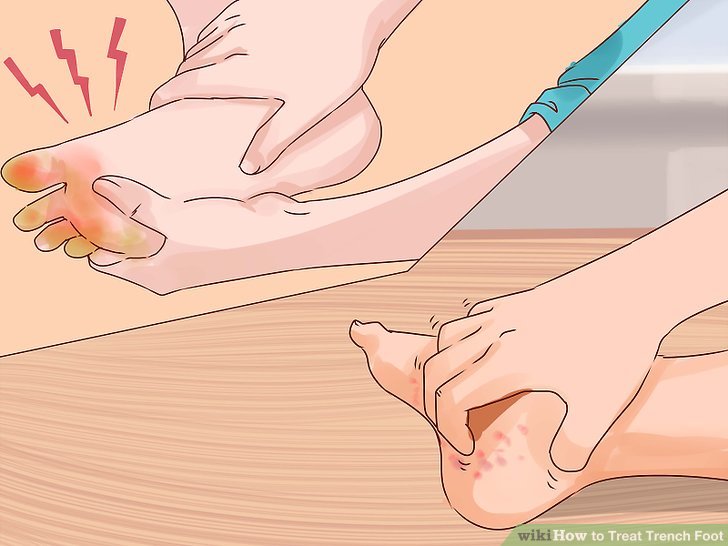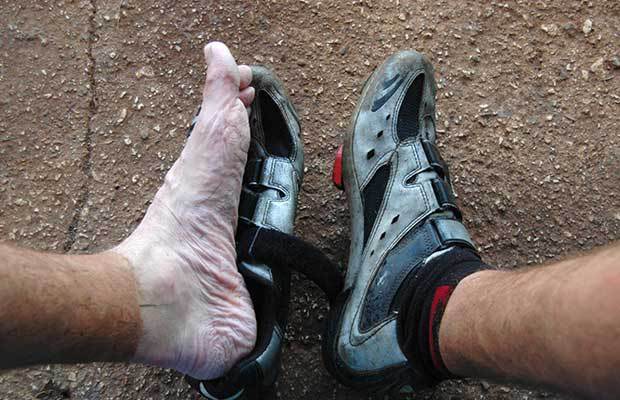
It’s like a bad scene out of a disaster movie mixed with your worst nightmare. Some event forces you and your family to leave your home with only your bug out bags on the backs of you and your family. The good news is you are prepared and have set aside provisions and planned for the trip. You also have a destination 50 miles away at a relative’s house that is waiting for you with plenty of security and supplies. You expect the trip to take 3 days of walking back roads. Not ideal, but certainly doable.
The trip starts out normally enough but you were forced to travel in almost constant rain. At the end of day one everyone’s feet are sore, most have blisters and your younger children are starting to act like they can’t go on another mile.
Our bug out plans eventually come down to relying on our feet in a worst case disaster to carry us to safety. Sure we have options and my personal first option is staying in my home. When that fails me I have a bug out vehicle, but if that isn’t an option we strap packs to our backs and hit the trail. Injuries to your feet can incapacitate quickly so it is important to care for these modes of transport that would be crucial in a disaster scenario. One main issue with walking long distances is blisters. Another topic that is a little less discussed is trench foot.
What is trench foot?
Trench foot is caused when your feet are wet for long periods of time and as it advances, blisters can easily form in the skin that is first pruned and wrinkled. Left untreated these blisters can become infected, your skin begins to slough off. You can also experience swollen feet, cramping and numbness. Severe cases of trench foot can cause skin and muscle damage so this is something we want to get in front of quickly before it keeps someone from being able to walk.
Trench foot has been a problem as long as we have had feet and shoes, but it came to prominence in the trench warfare of WWI where soldiers would spend days with their feet covered in water and mud. While this likely won’t happen to your little survival group, minor effects of trench foot could cause issues and can be relatively easily prevented with some quick and simple tips.

Severe trench foot can cause tissue and muscle loss. This man will never have to worry about clipping his toenails again.
How can you prevent trench foot?
The key to preventing trench foot is simple in theory. Keep your feet dry. The hard part is doing this as a habit and may be even more difficult if you are on the run or being pursued. Here are a few tips you can employ to help you.
- Keep your feet dry and clean – Easier said than done. When you are hot, your feet sweat. When you have to cross water, your feet get wet or if you are forced to hike through rain, snow or wet grass. Assume your feet will get wet, but you can buy footwear and socks that help that condition. You can purchase waterproof boots and moisture wicking socks. When you stop, make sure you take your socks off and check your feet. If your socks are wet, allow your feet to dry Use foot powder if you have it and treat any blisters before they get worse.
- Change your socks often – This simple act could do more good than almost anything else. Put on dry (a different pair) socks when you stop to take a break. You can hang the wet ones on your pack to dry out. Some people recommend two pairs, but I would say three are better so you can hopefully clean one pair too. Roll your socks inside out so you can keep up with what has been worn.
- Let feet air out – Allow your feet to breathe and dry as long as possible especially if you are experiencing symptoms. Lying down will help with circulation. Again, if you are in a pursuit/combat situation, you don’t want to go to sleep with your shoes off, but for the rest of us, keeping your feet dry and healthy is easier than dealing with injury and infection. If the weather is very cold, you will have to adjust this, because you don’t want frostbite either.

Early signs of possible trench foot if left untreated and the feet aren’t dried out.
What should you have in your bug out bag?
There are a few simple supplies you can have in your bug out bag that will help you prevent and treat trench foot if you are forced to bug out.
- 3 pairs of wicking socks
- Foot powder to remove moisture
- Moleskin or blister block to address blisters before they get worse
- Antibiotic cream
- Good hiking boots or shoes that allow your feet to breathe should help them dry faster. Waterproof boots should keep them dryer. Either has benefits depending on the conditions. I prefer heavy-duty hiking boots that take a beating.
Part of planning to bug out has to extend to more than just the necessary contents of your bug out bag. There is the health and well-being of the people you are bugging out with too that should be considered. Proper foot care will keep people healthier and keep them moving longer.




















